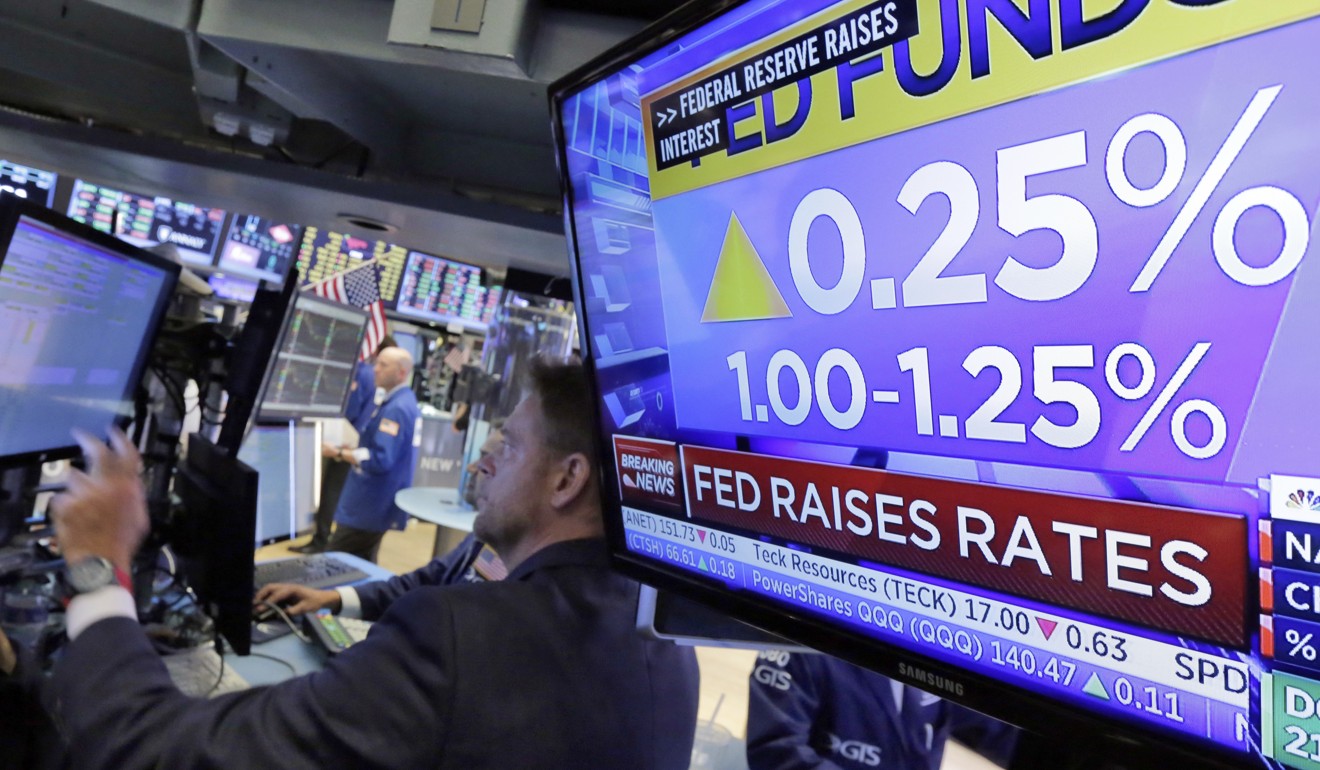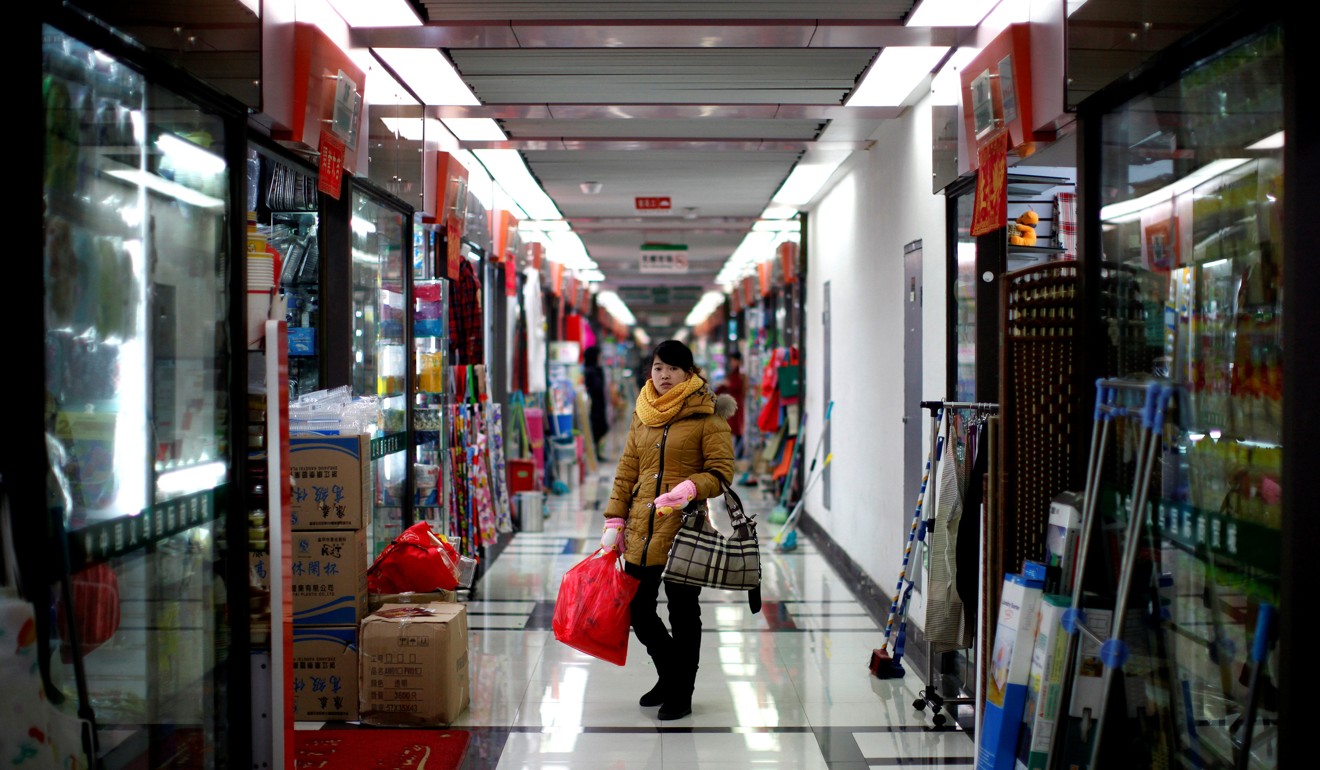
How the Fed’s balance sheet unwind and return to financial ‘normalisation’ will hit China
The US’s post-crisis-era policies could hammer asset prices across the world, and exchange rates in emerging economies
A decade after the global financial crisis crippled markets, the US Federal Reserve is poised to revise its post-crisis-era interest rate policy and wind down its US$4.5 trillion balance sheet – a move that could hammer asset prices across the world, and exchange rates in emerging economies.
The Fed on Wednesday night raised the key short-term interest rate by another 25 basis point to a range of 1 per cent to 1.25 per cent at the conclusion of its two-day policy meeting.
But Fed chair Janet Yellen also announced that the US central bank had decided to reduce its bulging balance sheet, which ballooned fivefold during the quantitive easing era to counter the worst economic recession in the US since 1929.

Taking the knife to its balance sheet will inevitably lead to a tightening of liquidity conditions, and according to Zhou Xi, an analyst for Bohai Securities, the new policy “will typically cause a spillover effect on the rest of the world”
“For the Fed, it’s the normalisation of its crisis-era monetary policy. But for some other economies, it could probably wreak havoc, ” said Zhou.
“A subsequent strengthening in the US dollar, along with stronger expectations, will siphon capital away from global markets and cause continuous capital outflows [from the rest of the world], putting particular pressure on asset prices and exchange rates in emerging markets.”
Over the past decade, global asset prices have rallied thanks to the availability of cheap money, and for some emerging economies, massive capital inflows have triggered rapid expansion in domestic credit and appreciation in the currency.
A reversal in capital flows, however, could now prick the bubble in asset prices and increase hard-landing risks.
For China, the Fed’s reduction in its balance sheet will put the People’s Bank of China in a difficult position, say analysts, with many financial institutions already facing tighter liquidity due to the ongoing regulatory crackdown.
“Considering the limitations of the financial system, the probability is not high that the PBOC will follow suit and tighten policy rates,” said Li Chao, an analyst for Huatai Securities.

It seems unlikely, however, the PBOC will loosen its monetary policy “to any large extent”, Chao added, as that will weaken the yuan’s exchange rate and exacerbate capital outflows from China amid expectations of a stronger US dollar.
More importantly, the PBOC has already shifted its policy priority from stabilising growth to reducing the financial leverage, which makes it even less possible to now ease its policies.
“Investors are scratching their heads about the direction of China’s interest rates, ” said Hu Mingzhe, an analyst with Galaxy Futures Company.
Investors are still uncertain about the future...the Chinese economy has started to embrace a downward trend [while at the same time] the PBOC has suggested that it doesn’t want to demoralise investors
Short-term interest rates have increased sharply in China due to current tight cash conditions.
The rising cost of capital, however, hasn’t affected long-term interest rates yet, such as the yield for government bonds with a maturity of more than one year.
“That suggests investors are still uncertain about the future,” Hu said. “The Chinese economy has started to embrace a downward trend [while at the same time] the PBOC has suggested that it doesn’t want to demoralise investors.”
The most recently-released Chinese economic data certainly points to a distinctly greying economic picture.
Government statistics on Wednesday showed the country’s factory output rose 6.5 per cent in May from a year ago, unchanged from April’s growth rate.
Dixed-asset investment growth, however, slowed to 8.6 per cent for the first five months of the year, down from 8.9 per cent in the Jan-to-April period.
Private investment growth also slowed, to 6.8 per cent in Jan-May, from 6.9 per cent in the first fourth months.

“It makes sense that markets currently interpret rising capital costs as temporary. Nonetheless, whether it’s the real intention of the PBOC, is still open to question,” Hu said.
“If the PBOC follows the Fed and raises short-term rates, I expect investor confidence to take a hit and domestic cash conditions to deteriorate.”
Analysts from Shenwan Hongyuan Securities, however, are slightly more optimistic, insisting the impact on China’s “financial conditions and its currency will be limited”, in a research note written by its Meng Xiangjuan and Qin Tai.
They say China’s foreign exchange reserves have rebounded, indicating that stringent capital control measures and a stabilising yuan have successfully helped stem capital outflows.
They also expect the Fed’s normalisation of its monetary policy to be a slow, gradual process, so as not to risk any slowdown in the US economic recovery, which may limit the US dollar’s gains throughout the year.
“The yuan will remain relatively stable for 2017, reaching 6.8 or 6.9 by year-end,” Meng and Qin predict, adding that China’s improving international balance of payments, will also reduce outflow pressure and support its exchange rate.

